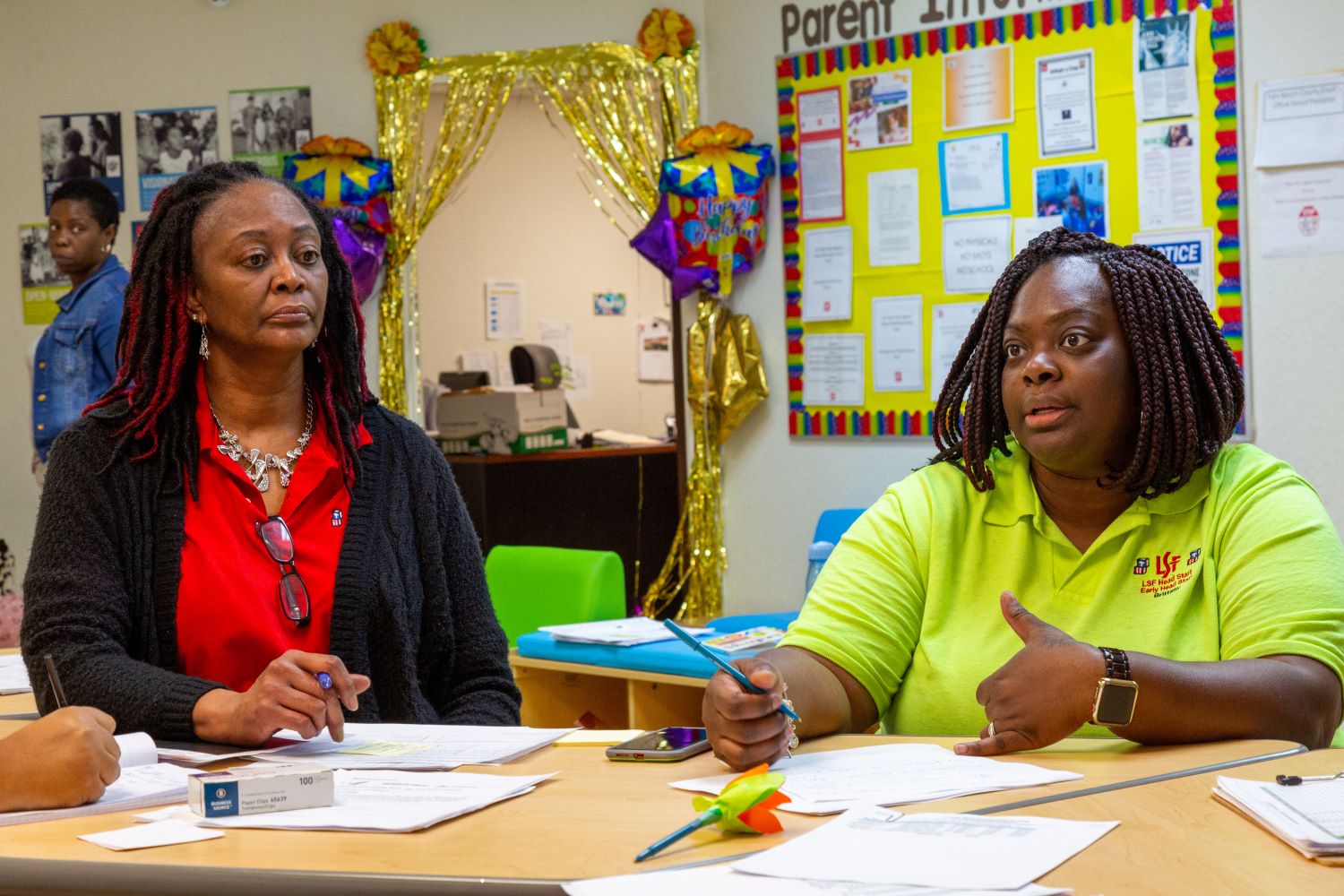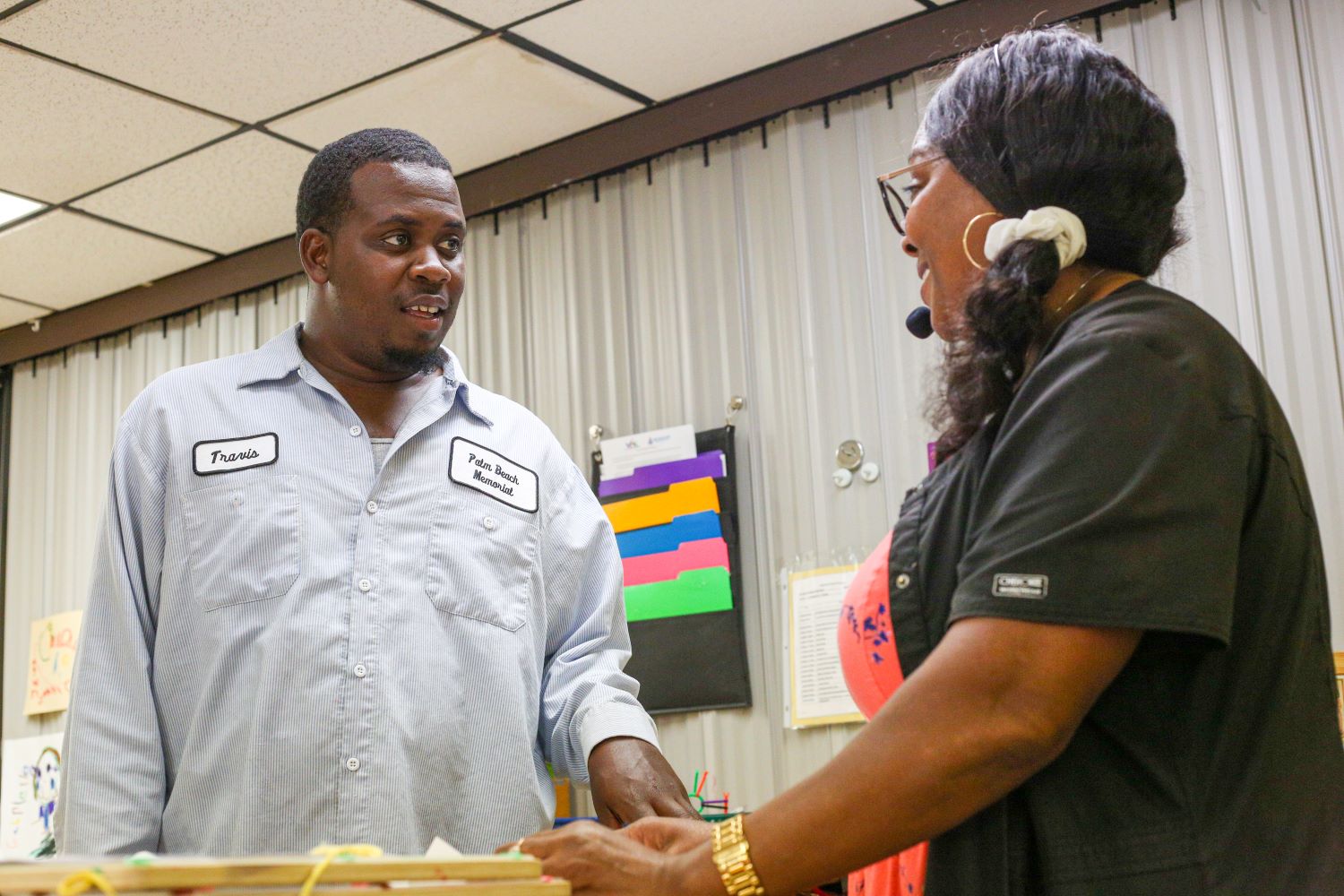Program staff and families can consider and plan for many aspects of the transition to kindergarten before, during, and (whenever possible) after the transition takes place. Communicating with the receiving school is a significant element of transitioning. The school visit is one way for this to happen, in person or virtually.
Often, the school visit is a large event with families, Head Start staff, and receiving school staff. In some communities, the receiving school visits the Head Start program, while in others, the Head Start staff and families visit the receiving school. Either way, this is typically a large meeting with families and staff, and there is little opportunity for one-on-one conversations. The discussion tends to focus on what the receiving school setting is like for children entering kindergarten. When there is a state of emergency, natural disaster, or pandemic, the school visit may look different or occur later than usual. It may also take place virtually.
 Revisit Child and Family Goals
Revisit Child and Family Goals
Prior to the school visit, Head Start staff and families can prepare together. They can check in on the goals they have set, develop related questions for the receiving school, and connect with other parents and families. In addition, program staff can partner with families to ensure that key child records and information are effectively conveyed to the receiving school. This information may include children's developmental screenings, progress toward goals, and current strategies to support children and their families. This information is important for the receiving school to help children continue the progress made in Head Start. Having updated and clear goals positions families to be strong advocates for their children in kindergarten.
Identify Questions
Based on the updated goals, program staff and families can work together to identify general questions to ask during the school visit. The questions might build on families' interests. For example, "What curriculum or strategies are used in the kindergarten setting to promote learning, ongoing development, and advancement of family goals?" Families can also ask general questions, such as "Does your kindergarten offer recess every day?" Or, families may ask more specific questions like "What are the strategies your school uses if a child needs to move around during circle time and the other children are sitting down?" Families may ask about how the receiving school addresses health and safety issues, such as those that arise during a pandemic or state of emergency. Many parents will be eager to learn how they can partner with their children's new school and be fully involved in their children's education.
Connect with Other Families
Families may prefer to ask other families who have already experienced the transition to kindergarten about their experiences. Head Start staff play an essential role in supporting family-to-family (peer-to-peer) connections. Program staff can coordinate times, events, social media groups, or other means of communication between and among transitioning families. During the summer, this could be through community partners such as libraries. This ensures that transitioning families have opportunities to gather information from and share ideas with families who have also experienced Head Start programming.
 Practice Scenario and Strategies
Practice Scenario and Strategies
Read about how one early childhood team works together to prepare a family for an upcoming virtual visit at their son's receiving school. Explore the scenario and reflect on opportunities to continue building the relationship with the family to help them plan for the visit.
Practice Scenario
Sarita, Rodney, and their 4-year-old son Harvey are planning to attend the virtual school visit to learn more about the receiving school. Sarita and Rodney intend to ask a few questions to better understand what the receiving school might be like for Harvey. Harvey's teacher, Kim, and the program's family advocate, Carole, meet with Sarita and Rodney to review the family's goals and prepare some general questions to ask during the visit. Harvey's parents are also interested in how they might become actively involved at the new school. Being fully engaged in Harvey's learning and the programming at Head Start has been very important to Sarita and Rodney.
Kim: Welcome, Rodney and Sarita! We are so glad to see you again.
Rodney: Thank you for being flexible with my work schedule. We are really excited to attend the upcoming virtual school visit and find out what it might be like for Harvey.
Kim: We are excited too. Thank you for thinking ahead about your questions for the school visit. It can be intimidating to speak in front of a large group, even via a computer.
Sarita: We are a little bit nervous, but we want to know as much as we can, and we think other families might have some of the same questions.
Carole: Based on Harvey's progress and your family's experiences, is there anything that you would like to change about your goal to help Harvey get ready for kindergarten?
Sarita: Well, we should update the progress Harvey has made in being able to move more easily from place to place. We were worried about this, but he is doing better since we have been getting outside in the backyard more often.
Carole: Let's update your family partnership agreement. Do you think it would be helpful to know how Harvey's new school will support his movement in kindergarten?
Rodney: Yes, that is important to us. At the virtual school visit, let's ask how they encourage movement in kindergarten.
Carole: Let's write this question down so you will have it at the school visit.
At the end of the meeting, Carole also shared that the school visit will be an excellent time for Sarita and Rodney to learn about the kindergarten curriculum, learning goals, and partnership with families. Together, they write a related question.
Strategies
Consider your role in the transition to kindergarten. How can you facilitate a successful in-person or virtual school visit and transition?
Leaders can:
- Ensure that policies, systems, supports, and resources are in place to facilitate planning and collaboration for seamless transitions for children and families, including the sharing of ongoing child assessment data with families.
- To support families' transitions to new learning settings, ensure that community and program data are used to inform goal setting, five-year planning, and continuous improvement.
- Develop partnerships with local public health departments, health centers, and community wellness agencies to ensure continuity of services that promote family and child well-being, including physical and mental health.
- Develop data-sharing agreements to facilitate the transition of children and families to kindergarten and to track children's progress and learning in kindergarten through third grade.
Staff can:
- Revisit and update individual child and family school readiness goals in partnership with parents.
- Ensure goals represent children's areas of strengths and those that require ongoing support.
- Together with families, develop general questions about the receiving school's curriculum, policies, and procedures.
- Explore with parents how they can become involved as advocates and leaders with their children's new school.
- Encourage families to read books about kindergarten with their children.
Parents can:
- Revisit and update goals for their children and themselves.
- Develop general questions about the receiving school's curriculum, policies, procedures, and family partnerships.
- Prior to the school visit, meet in person or virtually with other families who are also preparing for the kindergarten transition to share hopes and questions.
- Visit the elementary school with their children during a walk, or visit the school's website (if there is one) to see pictures of the new school.
- Engage in learning activities over the summer to support their children's readiness for kindergarten.
Featured Resources
- Explore the Leaders in School Readiness collection of resources to learn about strategies for collaborating with elementary schools.
- Use the Engaging Community Partners to Strengthen Family Services series of resources to guide your program's efforts to strengthen child and family outcomes.
- Watch Leaders Supporting the Transition to Kindergarten and Educators Supporting Successful Transitions to Kindergarten to learn about how other Head Start program and elementary school leaders and educators have facilitated successful kindergarten transitions.
- Take a look at the Family Engagement and Transition to Kindergarten collection of resources and videos to learn more about the importance of engaging families and partnering with them in the transition to kindergarten. Use these resources to develop your skills and practice what you have learned.
- Review the Enhance Parents' Advocacy and Leadership Skills resources to learn ways to support parents as advocates and leaders in your program and at home.
- Explore the Building Partnerships with Families series of resources for strategies to strengthen relationships with families.
Read more:
Resource Type: Article
National Centers: Parent, Family and Community Engagement
Program Option: Center-Based Option
Age Group: Preschoolers
Last Updated: September 1, 2023
